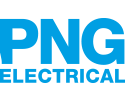You are here »
Home »
Solar Jargon Buster
What does it all mean? Here is our top list of technical solar jargon that we have gone in to detail for you
Power
- PV = Photovoltaic, simply the transfer of light (photo) in to electric (voltaic).
- W = Watts, a measurement of power.
- kW = 1000 watts
- Panel/Module is the name given to each individual solar panel, typically measuring around 1 meter wide and up to 2 meters long, it is a collection of silicon cells that generate electric current when photons (light particles) hit the silicon.
- Array is a group of panels/modules working together to feed in to an inverter.
- Wp = Watts peak. This refers to the peak power of a panel and is measured under STC (Standard Test Conditions) which are similar to a bright sunny day, hence the term ‘peak’ as this is likely to be the highest output you’ll see from the panel. Typical panels for the UK market are between 300Wp and 500Wp.
- kWp = kilo Watts peak. 1kWp = 1000Wp. Domestic arrays are usually between 4kWp and 20kWp, Commercial arrays average between 20kWp and 500kWp and industrial rooftop arrays can be 1000kWp (or 1MWp) or more.
- kWh = kilo Watt hour. This is the same as one unit of electric. We buy electric in units or kWh. If you use 1 kW (kilo Watt) for one hour then you will have used a single unit of electric i.e. a kWh.
Solar Inverters & Equipment
- Inverter = The inverter is a ‘box’ that sits in the building changing the DC electric from the array to AC electric that is acceptable for your appliances and the national grid.
String Inverter = A string inverter is currently the most common in the UK. Simply put, this means that the solar panels are wired in series and the voltage for the whole string of panels adds up as you add more panels.
Hybrid Inverter = The Hybrid Inverter is fast over taking sales of the traditional string inverter, that is because a hybrid inverter is storage battery ready. A hybrid inverter is an inverter which can simultaneously manage inputs from both solar panels and a solar battery, charging batteries with either solar generated power or grid power.
AC/ DC Coupled Inverter = - Solar Power Optimiser = This optimises the performance of each individual panel and increases overall system yield. So if some of the array is caught by shade the rest of the array will continue to work instead of shutting down with the shaded panels.
- Solar Shading Factor = The Shading Factor is the shaded fraction of the PV field with respect to the full sensitive area, for a given sun orientation (values 0 = no shades, 1 = fully shaded)
- Mounting system = This is the frame, brackets, hooks etc required to hold the panels in place. Various solutions are available to deal with the many situations that Solar PV panels can be mounted in. PNG have experience in all types of mounting and can discuss every option with you.
Exporting Solar Power
- FIT = Feed in Tariff, this is the government scheme which ended on 31st March 2019 and was a subsidy designed to drive down the installation price of Solar PV systems.
- Export = is the electricity that is generated but not used in the property. Exporting will happen when the property is using less electric than is being generated by the solar array. Therefore this excess electric spills over and is exported to the grid. Various energy suppliers will pay you for your export.
- SEG Payment = SEG payments are calculated by using export meter readings. SEG Generators are paid by their chosen SEG Licensee for the electricity which they export back to the National Grid. Generators thinking of applying for a SEG tariff should shop around to see which tariff is best for their individual circumstances.
- DNO = Distribution Network Operators, are licensed companies that own and operate the network of towers, transformers, cables and meters that carry electricity from the national transmission system and distribute it throughout Britain. There are 4 such companies with the UK.
- MPAN Number = A Meter Point Administration Number (MPAN) is used to identify individual electricity supply points. It’s usually a 21-digit number with the letter ‘S’ at the beginning and is displayed in a grid.
- Export MPAN Number = Means an Meter Point Administration Number for a Metering Point relating to the export of electricity from a premises. This can be applied for directly from the DNO after commissioning of your solar installation.
- G98 & G99 = G98 and G99 are engineering recommendations that are part of the Distribution Operation Code. It helps to keep everything safe and regulated.
- What if the difference between G98 & G99?
If you are connecting single or multiple phase generators at a single premises of up to 16A (3.68kW) per phase, you will need to complete a G98 notification form.If you are connecting single or multiple phase generators at multiple premises of up to 16A (3.68kW) per phase, you need to complete a G98 application form before you can connect.
If you are connecting large scale generation, above 16A (3.68kW) per phase or energy storage, then you will need to complete a G99 form.
If you are instructing a MCS certified installer you can rest assured that notifications to the DNO would be done on your behalf.

